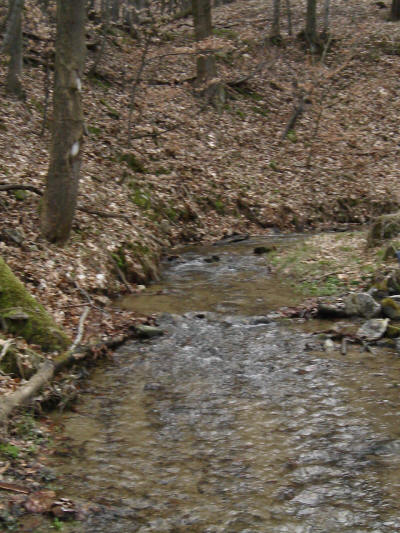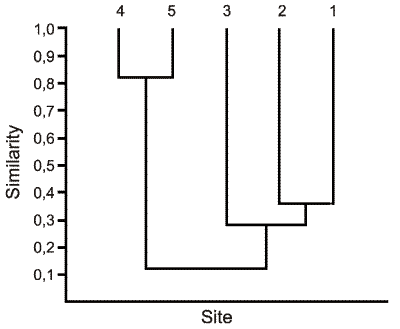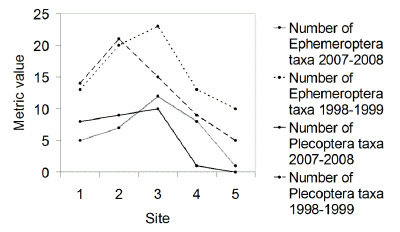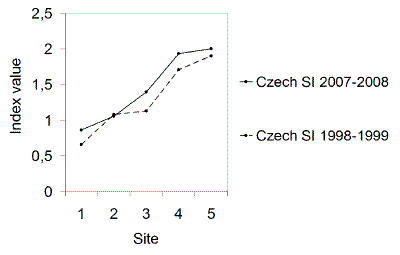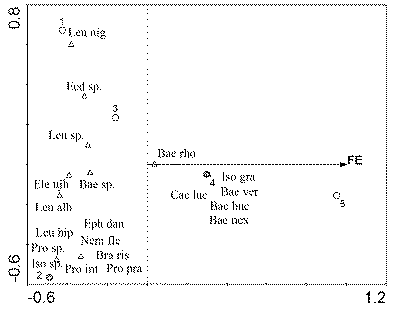Bulánková E, Halgoš J & Krno I, 2000: Význam a ochrana vzácnych biotopov v inundačnom území Moravy a horného úseku toku Gidry. Acta Envir. Univ. Comen. (Bratislava), 10: 157–161.
Derka T, 2003: Mayflies of the Gidra River Basin. Acta Zool. Univ. Comen. (Braislava), 45: 39–49.
Deván P, 1995: Fauna podeniek (Ephemeroptera) južnej časti Malých Karpát. Ochrana prírody (Banská Bystrica), 13: 129–132.
Fusán O, Kodym O, Matějka A & Urbánek L, 1980: Geologická mapa. III. Podklad. In: Mazúr E (ed.), Atlas Slovenskej socialistickej republiky. SAV a Sloven. úrad a kartog., Bratislava, 296 pp.
Halgoš J, 2003: The Gidra river basin – an example of unperturbed and devastated environments. Acta Zool. Univ. Comen. (Bratislava), 45: 3–9.
Hering D, Moog O, Sandin L & Verdonschot PFM, 2004: Overview and application of the AQEM assessment system. Hydrobiologia, 516: 1–20.
Hynes HBN, 1961: The invertebrate fauna of a Welsh mountain stream. Arch. Hydrobiol., 57: 344–388.
Krno I, 1984: Vplyv znečistenia na taxocenózu pošvatiek (Plecoptera) potoka Vydrice (Malé Karpaty). Acta F. R. N. Univ. Comen. – Zoologia (Bratislava), 27: 41–56.
Krno I, 1986: Stoneflies (Plecoptera) of the Bratislava forest-park (Little Carpathians). Biológia (Bratislava), 41: 115–125.
Krno I, 2003: Stoneflies (Plecoptera) in the Gidra River Basin (Malé Karpaty Mts., Slovakia). Acta Zool. Univ. Comen., 45: 47–62.
Krno I, Bulánková, E & Halgoš J, 1994a: Macrozoobenthos of the Morava river basin and tributaries of the Morava. Ecology (Bratislava), 1: 63–76.
Krno I & Hullová D, 1988: Influence of the water pollution on the structure and dynamics of benthos in the stream Vydrica (Small Carpathians). Biológia (Bratislava), 43 (6): 513–526.
Krno I, Illéšová D & Halgoš J, 1994b: Temporal fauna of the Gidra Brook (Little Carpathians, Slovakia). Acta Zool. Univ. Comen. (Bratislava), 38: 35–46.
Pastuchová Z, 2006: Macroinvertebrate assemblages in conditions of low-discharge streams of the Cerová vrchovina highland in Slovakia. Limnologica, 36: 241–250.
Punčochář P, 2000: Implementace legislativy EU v oblasti „kvalita vody“ v ČR a limnologický výzkum, pp. 315–319. In: Rulík M (ed.), Limnologie na přelomu tisíciletí: sborník referátů: XII. konference ČLS a SLS, Kouty nad Desnou, 18.–22.9.2000.
Rodriguez A & Derka T, 2000: Vplyv prirodzených a antropických faktorov na spoločenstvá podeniek (Ephemeroptera) a pošvatiek (Plecoptera) potoka Gidra, pp. 216–220. In: Rulík M (ed.), Limnologie na přelomu tisíciletí: sborník referátů: XII. konference ČLS a SLS, Kouty nad Desnou, 18.–22.9.2000.
Rodriguez A & Derka T, 2003: Physiographical and hydrobiological characteristics of the Gidra river basin. Acta Zool. Univ. Comen. (Bratislava), 45: 11–18.
Rosenberg DM & Resh VH, 1993: Freshwater biomonitoring and benthic macro-invertebrates. Chapman & Hall, NY, London, 487 pp.
Ter Braak CJ & Šmilauer P, 1998: Canoco 4. Centre of Biometry Wageningen, 351 pp.
Valúchová M & Rodriguez A, 2003: Hydrochemical and microbiological characteristics of the Gidra river basin. Acta Zool. Univ. Comen. (Bratislava), 45: 19–27.
Vrbická E, 2009: Stanovenie mikrobiologických ukazovateľov v hodnotení kvality akvatického ekosystému Gidra. Diploma thesis, Faculty of Natural Sciences, Comenius University (Bratislava), 73 pp.
Water Framework Directive 2000/60/EC of the European and the council of 23 October 2000 establishing a framework for community action in the field of water policy. Official Journal of the European Communities. OJ L, 327: 1–73.
Zelinka M & Marvan P, 1961: Zur Präzisierung der biologischen Klassifikation der Reinheit fließender Gewässer. Arch. Hydrobiol. (Stuttgart), 57: 389–407.




